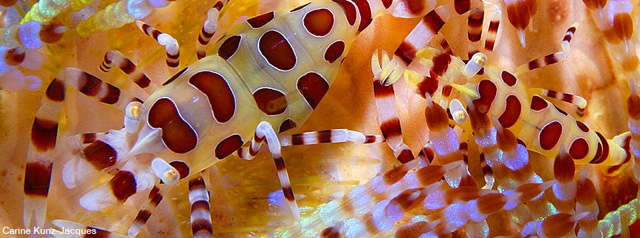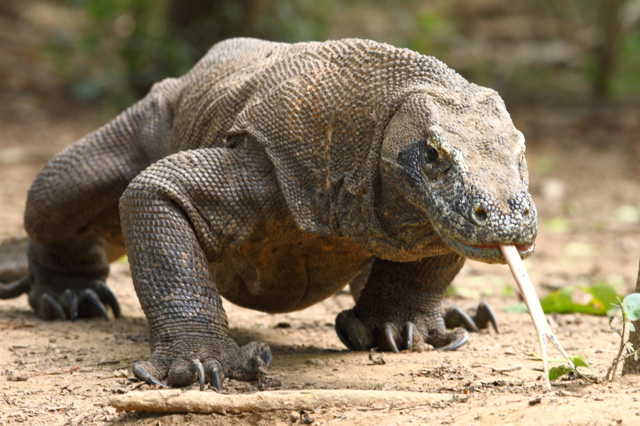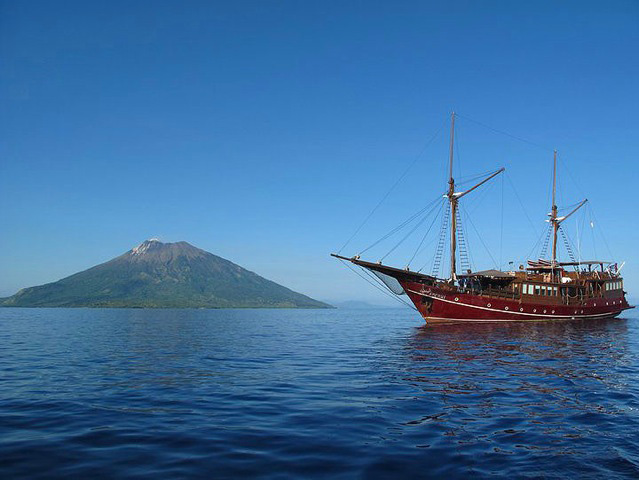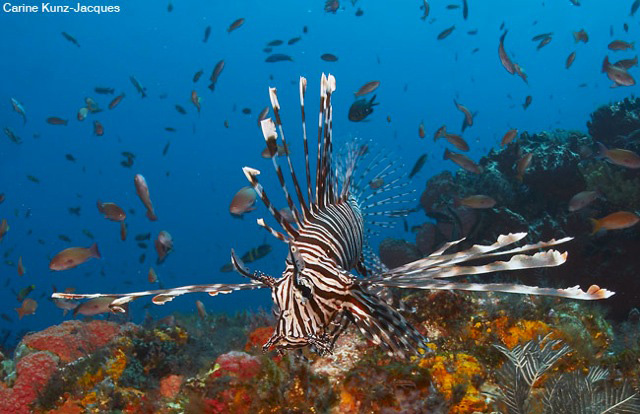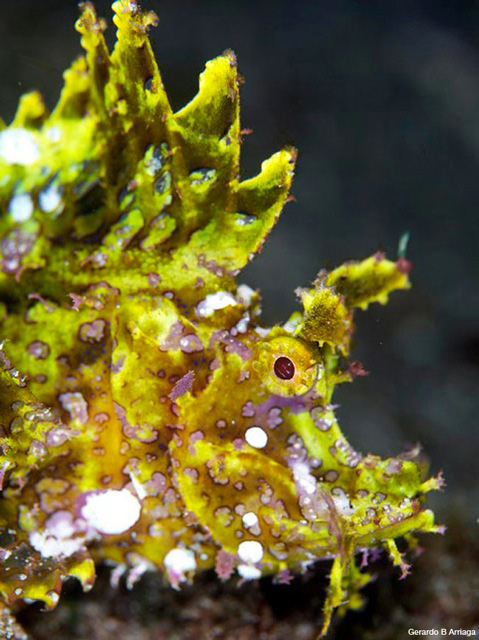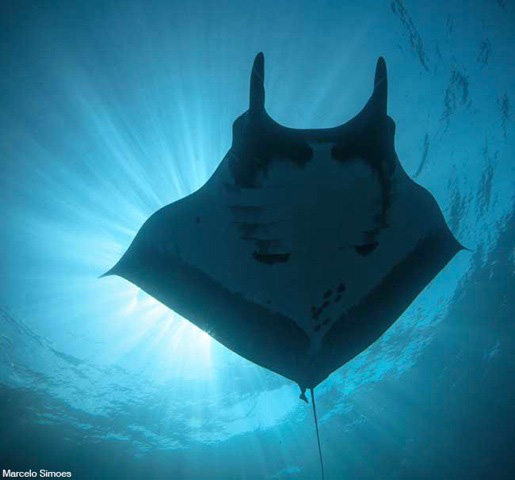A fire breathing dragon? Well, not quite, but a seven foot lizard going by the name “Komodo Dragon” most definitely had my attention.
I had decided to take a dream vacation using Scuba Dive Asia as my way into the wilds of the area. A trip that had been in my sights for years because of the life changing scuba diving adventure that lies in wait, Komodo National Park was most definitely a place that was on my bucket list. And here I was, with a ten foot lizard that was surpassing 100 pounds hanging out right in front of me. To say the least this adventure was more exciting than I realized.
A stunning, untouched paradise that still gives the word pristine meaning, Komodo National Park is a landscape of intense beauty. My journey began with an awe-inspiring sail to my desired location. Navigating through the twenty-nine islands — three are major pieces of land immersed in water, including Komodo, Rinca and Padar, with another twenty-six small islands — the view was a never ending string of eye candy, filled with a vibrantly green landscape, turquoise water and untouched elegance that only a tropical paradise can provide. Framing the beauty are white, sandy beaches, robust and towering volcanoes and a biodiversity on land that matches that of the ocean.
Created in 1986 as a UNESCO World Heritage Site, Komodo Island is an excellent example of what a preserved area can become if left alone and out of harm’s way. Filled with wild adventure in regards to both scuba diving and land adventure, this treasure located in Indonesia in the Wallacea region is a global conservation priority area situated smack dab between Sumbawa and the Flores Islands, a part of the Indonesian archipelago. In total this special area in the world encompasses over 1,800 square kilometers of sea and land.
As my interest in the area was based on the beauty that lies under the surface of the sea, the park itself was a pleasant surprise. Surrounding me, both day and night, were thousands of species of land animals and vibrantly colored birds. Within a short amount of time creatures big and small showed themselves in their natural habitat. From the graceful Timor deer (which happens to be the Komodo Dragon’s food of choice) to wild horses, from water buffalo to orange-rooted scrubfowl, from long tail macaques to the sulpher crested cockatoo, my mind was continually in a state of admiration. But my astonishment really came to the surface when the Komodo Dragon came out to play. Its size is, of course, impressive, with an ability to grow to nearly ten feet in length and 150 pounds in size. Though, there are other aspects to this prehistoric animal that leaves you in reverence, such as its saliva, which contains 57 strains of active bacteria used for killing its prey. It is also the world’s largest lizard and is considered to be a long lost relative of the varanid lizards that at one time scampered across Indonesia and Australia during the Pleistocene time period.
Beyond the intense beauty of land, the underwater world was just as inviting and impressive. Deciding to take advantage of all that Komodo Island has to offer, I decided to incorporate the two ways that one dives in the area: via liveaboard and from land. Though both were amazing, the one that truly showed why this place is so alluring for us scuba divers was the experience via a liveaboard. With so much beautiful diversity, I booked a ten day excursion with the impressive Arenui, a 140 foot luxury Indonesian wooden sailing vessel complete with cabins decorated in different themes. I was traveling with fifteen other competent divers, and our guides were spectacular…taking us to amazing diving sites void of other people. Our guides, so well versed in the area, were spectacular at taking us to both fantastic diving on both the north side and south side of the park. On the northern side, we learned, was were the water was clearer (for the time of year I visited – June) and warmer. This region was blessed with thousands of fish every color of the rainbow, with flourishing hard corals reefs that hosted large dolphins, eagle rays, Napoleon wrasses and sharks. To name a few. Truly an aspiring underwater photographers dream.
But that wasn’t where the beauty ended. In the north we visited Castle Rock where we were emerged in schools of barracuda and hunting giant travallies. We swam to depths of 20 meters deep, and despite such depth were still able to see with incredible clarity an ocean landscape filled with giant sea fans where pygmy seahorses ‘hung out’. Another aspect to this area that was mesmerizing was the big fish that were attracted because of the strong currents. Crystal Rock in North Komodo was another area that caught my fancy. This site, just a hop, skip and a jump from Castle Rock located on the northern tip of Komodo Island, was also spectacular for its strong currents bringing in large schools of fish like anthers and yellow ribbon sweetlips. The soft coral also was enchanting with its vibrant colors. But possibly my favorite of the northern section of Komodo was the Batu Bolong area. A gigantic rock situated in the middle of the sea, its unique detail of having a hole in the middle gave highlight to the small aspects of this place’s beauty. The true treasures lie under the water, though. My group swam with thousands of brilliant reef fish that lazily dispersed themselves throughout the vibrant coral while blacktop sharks, napoleon wrasses, mantas, sea turtles and large schools of rainbow runners played amongst them.
The southern waters were just as enchanting. Our guides took us first to Manta Alley where loads and loads of manta encircled us as we dove. Although the water was a bit more cold in this region it was truly worth it because of the immense amount of manta rays swimming with us. Next we were taken to Rinca Island and Horseshoe Bay where the water was also a bit colder. Never have I seen a dive site so rich with marine life. We ended up staying in this region for 3 days. Creatures abounded…from fire urchins to Coleman shrimps, zebra crabs to pygmy seahorses, the numbers of sea species were at times overwhelming. In this area we also saw different Pipefishes, feather stars, frogfishes, nudibranches, sea apples, and Rhinopias (which was definitely a highlight for me). Another highlight: getting to do an awesome muck-night-dive where I saw a Bobbit worm. We also dived the Yellow Wall of Texas in Horseshoe Bay where dense yellow soft coral inspired us with its beauty.
But maybe my favorite aspect of the entire trip was when our liveaboard guides took us to Sangeang, a dormant volcano situated just outside the park. There we were able to dive at a hot underwater springs location where gas bubbles from the black sand formed a magnificent contrast to the huge corals and sea fans.
Where else can you be in the midst of prehistoric relics and an underwater world rich with color that has been unharmed by human beings? No place in the world. That is actually why I have already booked my trip to go back.
If you are interested in learning more about this fascinating place Scuba Dive Asia is available to help you out with the entire trip. They are there for you – contact@scubadiveasia.com
Personal cruise highlights:
– Landtour and seeing the Komodo dragons.
– Castle Rock – North Komodo
– Crystal Rock – North Komodo
– Batu Bolong – North Komodo
– Manta Alley – South Komodo
– Cannibal Rock – South Komodo
– Yellow Wall – South Komodo
– Sangeang island
Useful travel and Indonesia country info:
Visa – Citizens of most Western countries can obtain a visa-on-arrival in Indonesia rather than securing one in advance. The cost is US$25 (bring the exact amount with you) and it allows stays of up to 30 days. Some nationalities are required to obtain a visa from an Indonesian embassy in their home countries prior to travel to Indonesia. Passports must be valid for six months from your date of arrival in the country.
Language – The national language is Bahasa Indonesia. English is widely spoken in tourist areas.
Currency – The official currency is the Indonesian rupiah, or IDR.
Credit cards and in particular Visa and MasterCard are widely accepted in hotels, restaurants and shops. Most shops will insist on charging a 3% fee for using a credit card. Hotels and restaurants will apply an additional 10% tax and often a service charge of between 5% and 10%. Banks will give cash advances for a fee of 1% to 2% of the amount drawn. Only American Express traveller’s cheques in USD are accepted and must be cashed at a bank.
Climate – Indonesia has a tropical climate with a high level of humidity. Temperatures may range from 79°F to 90°F, varying greatly according to area. Temperatures do not drop considerably at night. Seasons are influenced by the southwest and northeast monsoons and are divided into dry and wet. Rains generally consist of strong downpours, followed by sunshine. Please see individual diving area listings for precise recommendations of when to go.
Vaccines – No vaccines are required if arriving from the USA, Europe or Australia. Bali is free of malaria. Malaria is endemic in Papua. Dengue outbreaks are becoming more serious in urban areas so you should always protect yourself against mosquitoes where possible. Check with your embassy or consulate, as well as with a knowledgeable doctor, for detailed information on current health issues.
Electricity – The Indonesian electricity supply is 220 volts at 50 Hz and while reasonably reliable, it is subject to voltage fluctuation and surges. Power points are two-pin and round, so bring an adapter. Laptop computers usually have their own current regulators but additional equipment may be useful to protect them.
Airport Tax – Departure tax of 150,000 rupiah is charged when you leave Indonesia via an airport. This can only be paid at the airport and only in local currency. On domestic flights, taxes vary and also have to be paid at the airport.
——————————————————————————————————————–
Words by Onno Lenning, photos as credited.
©2014. Content may not be used without prior express permission.
——————————————————————————————————————–

